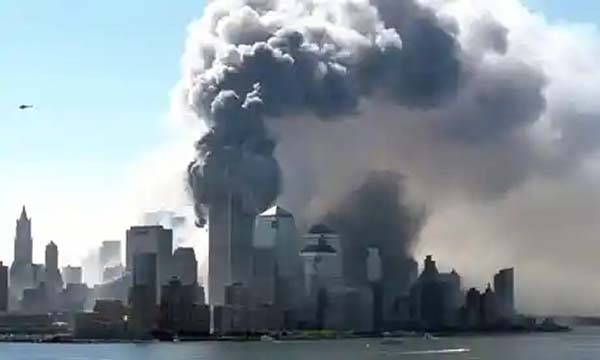
This failure resulted from previous FBI, CIA, and NSA protection for al-Qaeda members connected with the plot.
This is Part II of a startling new three part examination of 9/11 by Ben Howard, Aaron Good and Peter Dale Scott. Part I can be found here.
Before examining the details of the 9/11 plot, it is worth noting the extent to which the CIA, FBI, and NSA have acted to protect members of al Qaeda in the past. The most relevant recent history begins with the 1987 founding of al-Kifah Refugee Center in Brooklyn, a hub for U.S.-based mujahideen to travel to Afghanistan, and later Bosnia.[1]
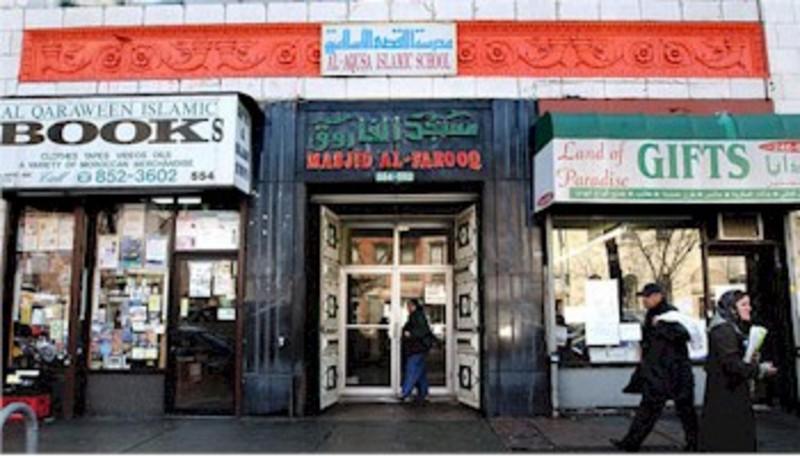
It originated as an office of Maktab al-Khidamat (MAK), an organization financed by Osama bin Laden and founded by Mustafa Shalabi, an Egyptian who would later help bin Laden move to Sudan in 1991.[2]
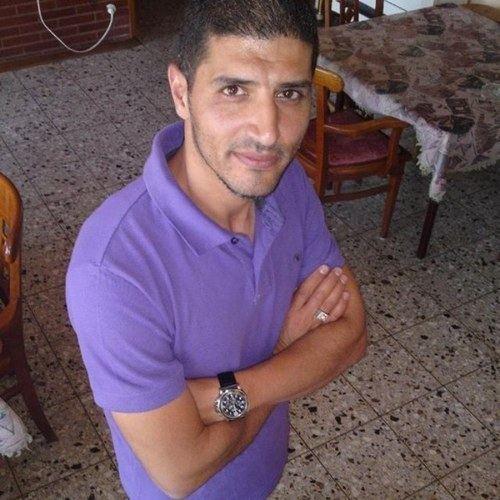
Mustafa Shalabi in 1991. [Source: alchetron.com] ![Osama bin Laden in the late 1980s helped drive Soviet forces out of Afghanistan [EPA]](https://covertactionmagazine.com/wp-content/uploads/2021/09/osama-bin-laden-in-the-late-1980s-helped-drive-sov.jpeg)
Osama bin Laden in the late 1980s. [Source: Aljazeera.com]
The Center chiefly supported Gulbuddin Hekmatyar’s jihadi organization, Hezb-I-Islami.[3] The Egyptian “blind sheik” Omar Abdel-Rahman was one of the key MAK figures.
Eventually convicted for his role in the 1993 landmarks plot, Abdel-Rahman had previously been granted several visas by CIA officers who were serving as consular officials (presumably under official cover) in U.S. embassies in Sudan and Egypt.[4]
There is much to say about the Al-Kifah Center and its support for American foreign policy goals in Afghanistan and Bosnia. For now, we shall focus on the role that MAK figures played in domestic terror attacks and the protection they received from the U.S. government.
Three of Abdel-Rahman’s followers who were affiliated with the center, including El Sayyid Nosair, conspired to kill Jewish Defense League leader Meir Kahane in Brooklyn on November 5, 1990.[5]
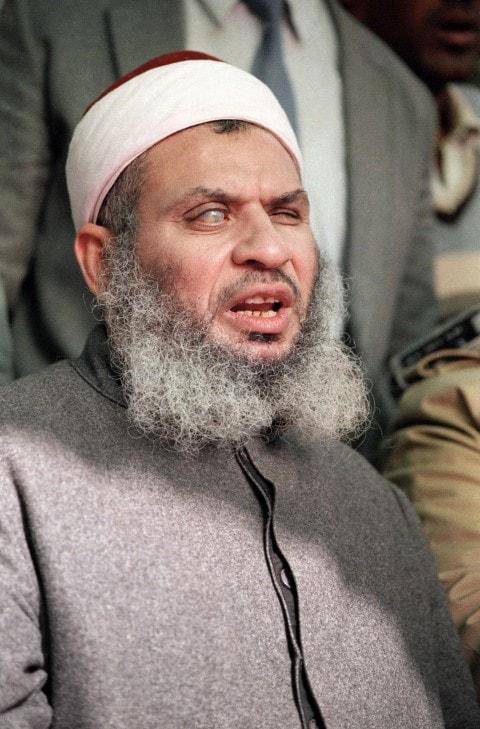
Omar Abdel-Rahman [Source: washingtonpost.com] 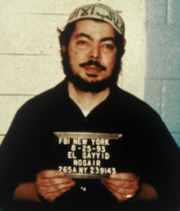
El Sayyid Nosair [Source: historica.fandom.com]
This was, according to the Pentagon’s DHRA, “the first al-Qaida-related terrorist attack in the United States.”[6]
Nosair alone was accused of the murder by NYPD Chief of Detectives Joseph R Borelli.[7]
However, it quickly became clear that Nosair was part of a broader cell. A search of his home led the NYPD to a trove of U.S. Army training manuals, as well as video footage of talks delivered by one Ali Mohamed at the JFK Special Warfare Center at Fort Bragg.[8]
Ali Mohamed was an Egyptian with many connections to both the CIA and FBI. After a short stint in the early 1980s as a CIA contract agent ended poorly, he was put on a State Department watch list, preventing him from entering the U.S. Despite this, he entered the U.S. on a CIA-sponsored visa program “designed to shield valuable assets or those who have performed important services for the country.”[9]
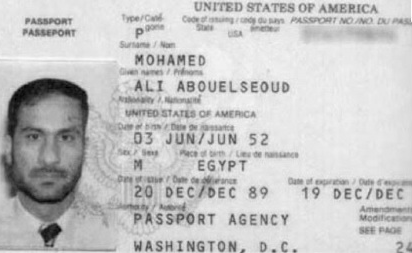
While stationed at Fort Bragg, he made trips to Afghanistan (including at least one in 1988) and spent his weekends in the New York City metro area training MAK members, including Nosair.[10]
Despite Ali Mohamed’s ties to Nosair, which would have been easy to deduce from the materials found in Nosair’s home, or from the fact that the FBI observed him training Nosair to shoot in 1989,[11] Ali Mohamed was never arrested.
Instead, he continued to live peacefully in California where he had moved.[12]
This was chiefly because the FBI withheld materials found in the Nosair home from the NYPD’s chief investigating officer, Edward Norris, as well as Manhattan DA Robert Morgenthau. The withholding of these materials was not uncovered until after the 1993 World Trade Center bombing.[13]
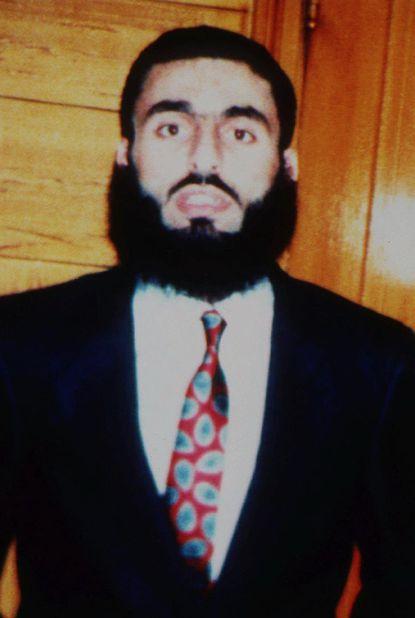
Though Nosair was acquitted of the Kahane murder in a 1991 trial,[14] he was convicted of assault, coercion, and possession of a gun.[15] He later admitted to his role in the killing and, in 2005, named the convicted 1993 World Trade Center bomber Mohammed Salameh as one of his co-conspirators.[16]
Despite the clear links between Ali Mohamed and the murder of Meir Kahane, he was left alone by the American security services and was able to use his leverage to evade capture by foreign governments as well. In 1993, not long before the bombing of the World Trade Center, he was briefly detained by Canadian authorities when he traveled from his home in California to Vancouver airport to fetch Essam Hafez Marzouk. [17]
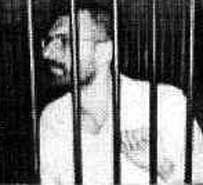
Marzouk, a close ally of Ayman al-Zawahari and Osama bin Laden, had been detained at Customs for carrying two forged passports. When Mohamed inquired about Marzouk at the Customs office, he too was detained.[18] After interrogation by the RCMP, he finally convinced them to call his contact at the FBI, John Zent. After Zent vouched for him, Mohamed was released.[19]
The protection Mohamed received in 1990 and in 1993 would have grave repercussions. For one, Mohamed trained several members of the cell responsible for the 1993 World Trade Center bombing, and he had been in communication with them leading up to the attack.[20]

But perhaps even more disturbing was the presence of an FBI informant, Emad Salem, within the cell responsible for the bombing.[21] In fact, Salem was not only an informant—he appears to have been a key element of the plot.

And according to The New York Times he was in a position to “thwart the plotters by secretly substituting harmless powder for the explosives.” Instead, the plan to neutralize the bombs “was called off by an F.B.I. supervisor.” The bombing took place, killing six, injuring over 1,000, and causing more than half a billion dollars in damage.[22]
The protection provided to Ali Mohamed again had further devastating consequences, as he played a central role in the August 7, 1998, bombing of the U.S. embassy in Kenya. He was responsible for establishing an al-Qaeda cell in Kenya, and surveilled the U.S. embassy, showing photographs he had taken to bin Laden who then “pointed to where a truck could go as a suicide bomber.”[23] Mohamed was in contact with the FBI leading right up until the bombing, telling an FBI agent in 1997 that “he loved bin Laden and believed in him.”[24]

On top of this, the NSA was intercepting calls from one of the bombers, Mohamed al-Owhali, who called a key Yemen al-Qaeda operations hub on August 5, 6, and 7—just before the attack.[25]
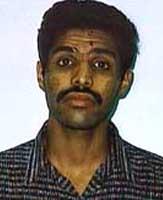
The NSA should have recognized the importance of al-Owhali’s Nairobi safehouse given the number of calls between it and the Yemen hub, a known al-Qaeda operations center. By that point, the agency had been monitoring the Yemen hub for two years. They must have been aware of the calls, and yet said nothing to the FBI or CIA. Nor did the NSA alert the direct target of the plot, the U.S. State Department.
After the bombings, when al-Owhali accidentally survived and was scrambling to escape Kenya, he made a number of calls to the Yemen hub, which in turn made a number of calls to bin Laden himself on August 10th and 11th. These calls clearly indicated the presence of an al-Qaeda agent still in-country, and yet the NSA never informed the FBI or anyone else.[26] The information about these calls only emerged during the embassy bombing trial in early 2001.[27]
It is prudent to wonder at this stage if this information was blocked by the NSA’s “Chop Chain,” a group within the NSA consisting of the director’s top staff and other high-ranking personnel within the NSA.
According to former NSA communications director Tom Drake, the NSA’s Counter-Terror (CT) Shop, a group of about a dozen young analysts, was “issuing reports” about al-Qaeda, one of their areas of responsibility, but “no one was reading them.” These reports presumably included those on al-Owhali’s phone calls detailed above.
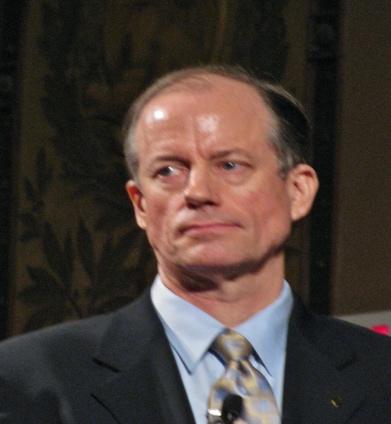
The NSA’s Chop Chain of senior leaders was responsible for reading these reports, and deciding what could be disseminated to the FBI, CIA, or other agencies.[28] In this case, they failed to disseminate highly relevant and time-sensitive reports, which might have prevented the bombing, to any other agency.
Contrary to Drake’s assessment, it seems implausible that the NSA’s senior leadership would not have been aware of CT Shop reports on phone calls coming to al-Qaeda’s Yemen hub from a country where al-Qaeda had just directed a major terrorist attack at U.S. personnel. It would appear, therefore, that the NSA, as well as the FBI, was protecting the al-Qaeda network from exposure and prosecution.
Blee and Black and Tenet

During the 2002 congressional investigation into pre-9/11 intelligence failures, Representative Richard Burr asked Tom Wilshire, CIA Bin Laden Issue Station Deputy Chief, why the CIA failed to inform the FBI about key activities of the alleged 9/11 hijackers in the 18 months leading up to the attack. Wilshire replied that “something apparently was dropped somewhere, and we don’t know where that was.”[29]
In the early weeks of what would become a decades-long coverup, Wilshire was attempting to protect himself and his colleagues by asserting that incompetence, not protection of a joint CIA-Saudi operation, was responsible for the CIA’s failures.
We shall see, however, that Wilshire was not being honest with his reply. In fact, over the past decade, a number of researchers have identified a pattern of deception and obfuscation which implicates not only Wilshire, but also his boss, Richard Blee—the man at the top of the Bin Laden Issue (or Alec) Station.
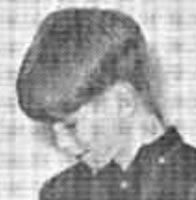
While Blee has been the subject of scrutiny for at least the past decade from researchers like Kevin Fenton, John Duffy, and Ray Nowosielski, CIA Director Tenet himself has come under suspicion in recent months for his role in protecting at least one person involved in the October 2000 bombing of the USS Cole.
Tenet’s actions to promote and protect Richard Blee should be seen in a new light given a) the story of these recently leaked phone calls; and b) prior revelations about Alec Station’s role in protecting USS Cole bombing suspects.
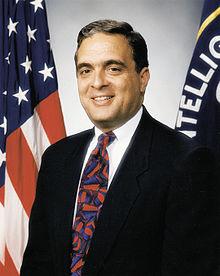
To assess the degree to which the CIA was complicit in the 9/11 attacks, we must place Tenet’s actions in the context of Richard Blee’s behavior.
Blee’s Origin Story
To begin unraveling the details of the CIA’s actions in the months and years leading up to the 9/11 attacks, it is worth delving into Richard Blee’s past. Though there is very little publicly known, he seems to have joined the Agency as something of a legacy admission. Mark Rossini, an FBI agent who worked in Alec Station while Blee was its chief, described Blee as someone who “came from a legacy family in the Agency, and clearly he carried that gravitas.”[30]

His father, David Blee, was a legendary officer within the agency. Along with CIA Director William Colby, Blee the elder was responsible for the ouster of the storied and wildly paranoid counterintelligence chief James Angleton in 1974. Also among Blee’s successes was the defection of Joseph Stalin’s daughter, Svetlana Alliluyeva while Blee was New Delhi Chief of Station. In 1971, he was promoted to Soviet Bureau chief. By the time David Blee retired in 1985, he had Angleton’s old job as the head of counterintelligence.[31]
Richard Blee’s early activities in the agency are largely absent from the public record. We know that, by the time he was 26, he was active in the Central African Republic before being posted to Niger, and later to Algeria. By the mid-1990s, Blee was assigned to a task force that was working to destabilize the government of Iraqi leader Saddam Hussein.[32]

Immediately prior to becoming Alec Station chief in 1999, Blee was a “fast-track executive assistant from the seventh floor,” a position which Steve Coll describes as “a traditional breeding ground of CIA leadership.”[33] According to John Duffy and Ray Nowosielski, George Tenet brought Blee with him to the seventh floor when he was appointed CIA Director.[34]
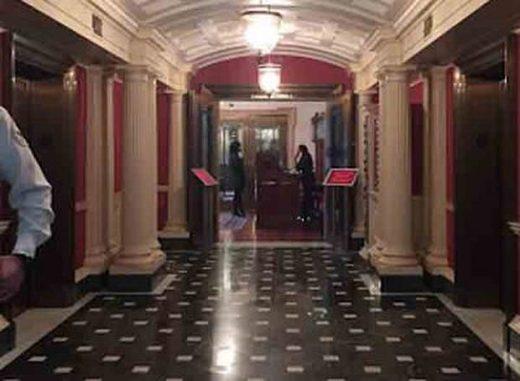
Tenet apparently continued to find Blee useful. By mid-1999, he had appointed Blee to head Alec Station, formally known as the Bin Laden Issue Station, the agency’s hub for everything related to al-Qaeda.[35] While at Alec Station, Blee and Tenet continued to have a close relationship; FBI agent Mark Rossini described Blee as “a guy who clearly had direct communication to George.”[36]
Blee and Black at Alec Station
By the time of his appointment to Alec Station in 1999, Blee had begun to take an interest in Central Asia. As U.S. firms invested billions in Central Asian hydrocarbons, U.S. military and intelligence penetration of the region continued apace.
George Tenet had appointed Cofer Black to run the CIA’s Counterterrorism Center at around the time that Blee was appointed to run its Alec Station component.[37] Together, Blee and Black worked to create secret liaison agreements between the government of Uzbekistan and the CIA.[38]
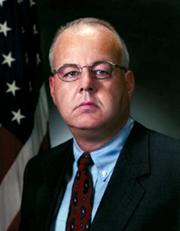
These were later expanded to include the Northern Alliance in Afghanistan.[39] Blee seems to have been quite keen on expanding the relationship between the CIA and the Northern Alliance, led by Ahmed Shah Massoud. In October of 1999, Blee lobbied for an expanded CIA-Northern Alliance partnership,[40] and he revisited the issue after the USS Cole bombing in October 2000.[41] As Peter Dale Scott and Aaron Good have noted, Massoud’s own opposition to a U.S. invasion may have resulted in his murder two days before the 9/11 attacks.[42]
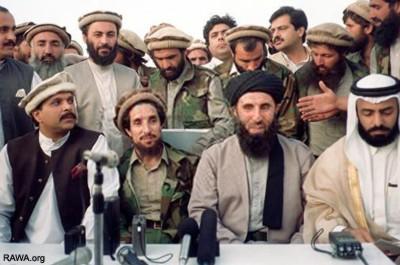
In the aftermath of the 9/11 attacks, expanded U.S. involvement in Central Asia seemed all but a given. Blee himself seems to have been rewarded for his efforts in advocating for increased CIA activity in the region, becoming Kabul Chief of Station.[43] But before returning to his Central Asia focus, Blee took a detour that would implicate him in efforts by many in the CIA and other agencies which, collectively, served to “allow the [9/11] attacks to go forward.”[44]
Who Knew What When?
Detailing the suspicious actions taken by Richard Blee and his subordinates before the 9/11 attacks would fill a book, and in fact Kevin Fenton has written that book. Most notably, Fenton documents an explosive series of events which demonstrates Blee’s role in preventing the activities of key 9/11 plotters from being discovered by the FBI or by senior members of the Clinton and Bush administrations. In particular, Blee’s statements to Condoleezza Rice and Richard Clarke are so out of step with what he knew about the activities of certain key al Qaeda members at the time that, clearly, the most plausible conclusion is that Blee intended to mislead them.
The story begins in January 2000 with Khalid al-Mihdhar and Nawaf al-Hazmi in Dubai. Later to become infamous for their alleged role in flying American 77 into the Pentagon, the two were transiting on their way to Kuala Lumpur, Malaysia, for a summit with other al-Qaeda members. Following a tip received from the NSA, the CIA discovered al-Mihdhar’s passport had a U.S. visa which was set to expire in just a few months, and which he had not yet used.[45]

Khalid al-Mihdhar [Source: wikipedia.org] 
Nawaf al-Hazmi [Source: wikipedia.org]
When this information was passed to Alec Station, Doug Miller, an FBI agent assigned to the unit, understood its importance. He drafted a cable to be sent to the Bureau, warning them that al-Mihdhar may soon be visiting the U.S.
This cable was blocked by Blee’s deputy, Tom Wilshire. As Fenton notes, had the FBI been aware that al-Mihdhar planned to enter the U.S. soon, they would have been able to surveil him, not least because he began living with an FBI informant named Abdussattar Shaikh in May of 2000.[46]

On March 5, 2000, the Bangkok CIA station, responding to an inquiry from the Malaysia station about al-Mihdhar’s travels, sent a cable which indicated that al-Hazmi and al-Mihdhar had traveled to the U.S.[47] Despite claims to the contrary from CIA Director Tenet, this memo was read widely within the agency, including by Blee’s deputy Tom Wilshire on May 15, 2001.[48]
In May 2001, Blee began briefing key members of the Bush administration’s national security team, including National Security Adviser Condoleezza Rice, counterterrorism czar Richard Clarke, and others. In a meeting on June 28, 2001, Blee told Rice and others that “Osama bin Laden will launch a significant terrorist attack against the U.S. and/or Israeli interests in the coming weeks.”[49]
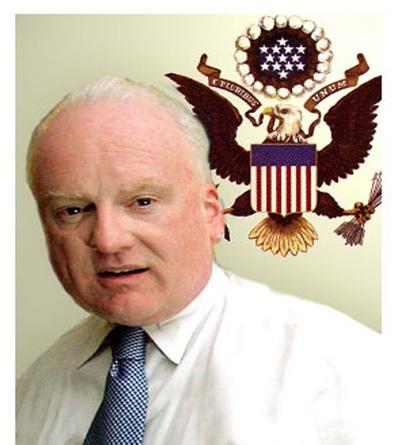
Richard Clarke [Source: salon.com] 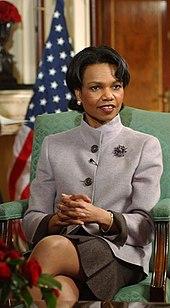
Condi Rice [Source: wikipedia.org]
On July 10, Blee delivered the line he is perhaps most famous for, saying to Rice and Tenet, “there will be significant terrorist attacks against the United States in the coming weeks or months. The attacks will be spectacular.”[50]
Then, beginning on July 5, 2001, Wilshire sent several cables which Richard Blee, among others, received. In a July 23 cable, Wilshire explained that “Khalid Midhar [sic] should be [of] very high interest anyway, given his connection to the [redacted].” At this stage, Wilshire certainly was aware that al-Mihdhar and al-Hazmi were likely already in the U.S.
He had blocked one cable which included this information in January 2000, and in May 2001 he read the March 5, 2000, Bangkok cable detailing al-Hazmi’s and al-Mihdhar’s travel to the U.S.[51] Still, he asked managers at the CIA’s Counterterrorism Center, Blee among them, for permission to pass this and related information to the FBI. Wilshire did not receive this permission, and he did not pass any information on to anyone in a position to surveil or detain either of the men.[52]
When Blee received this information detailing a known al-Qaeda suspect whom Blee’s own subordinates already knew to be inside the U.S., he did not take any steps to relay it to Rice, the FBI, or anyone else in a position to apprehend or surveil al-Mihdhar. At some point in late July, Blee met with CIA Director Tenet and other deputies, relaying to them that, “They’re coming here.”[53] If he did say this, he concealed what he knew very well—that “they” were, in fact, already here.
What Happens When the FBI Does Attempt to Foil the Plot?
Having detailed the lengths Blee and his subordinates at Alec Station went to prevent certain key facts from becoming known to the FBI, it is worth delving into what happened when the FBI did become aware of an element of the unfolding terror plot. The case of Zacarias Moussaoui is illustrative.
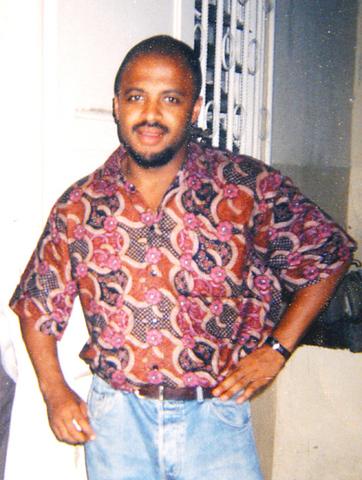
Moussaoui was a known entity to British and French intelligence by the late 1990s. He had been surveilled by MI5 via an informant and was investigated by the French government because of his possible connections to the assassination of consular officials in Algeria. He was placed on the French terror watch list in 1999.[54]
Despite this, Moussaoui had no problems entering the United States. He took flying lessons between February and May 2001,[55] and began lessons in July in Minnesota. This was financed by Ramzi Binalshibh,[56] an al-Qaeda operative who served as an intermediary between Khalid Sheikh Mohammed and the operatives in the U.S.[57]
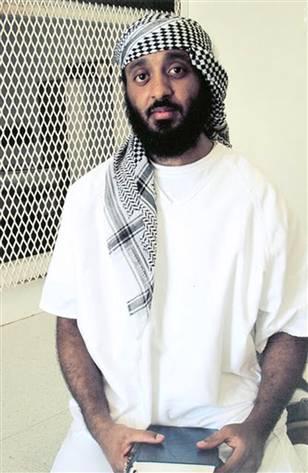
Ramzi Binalshibh [Source: humanrightsfirst.org] 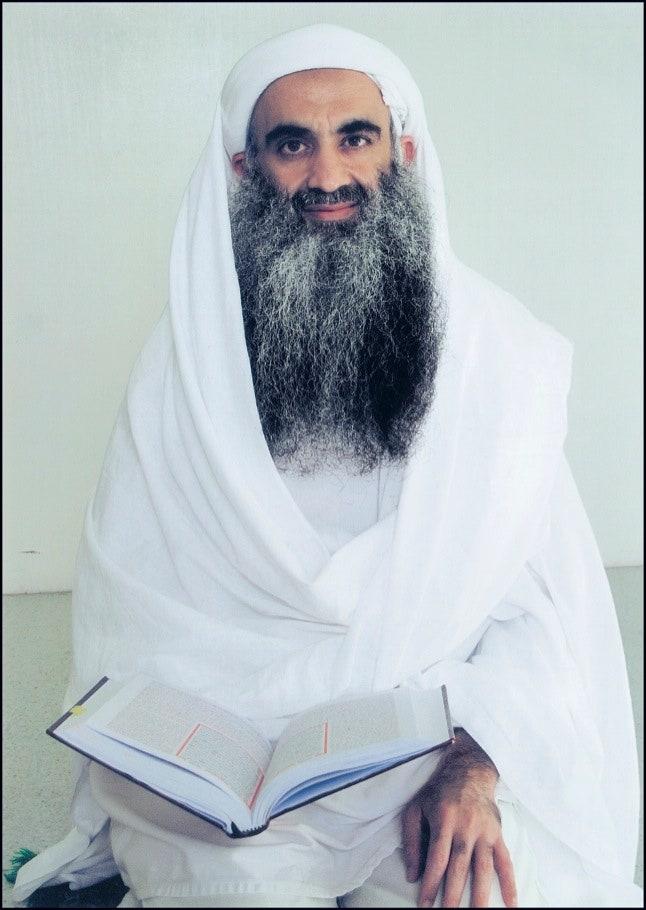
Khalid Sheikh Mohammed [Source: newyorker.com]
On August 15, 2001, the FBI began an investigation into Moussaoui[58] based on a tip from the flight school.[59] The FBI agents investigating Moussaoui became concerned he was an imminent threat,[60] and so on August 16 he was arrested by the INS for overstaying his visa.[61]
On August 24, FBI agents investigating Moussaoui were provided information from the French intelligence service which indicated that Moussaoui was a recruiter for Ibn al-Khattab, a mujahideen leader in Chechnya who was described by one FBI agent as a “close buddy with Bin Ladin.”[62]
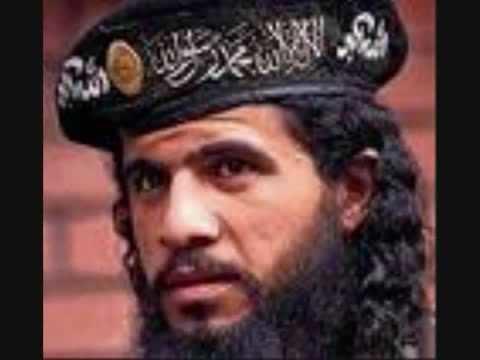
At this stage, in the words of FBI agent and whistleblower Coleen Rowley, the FBI agents on the case were “desperate to search the computer lap-top that had been taken from Moussaoui.”[63]
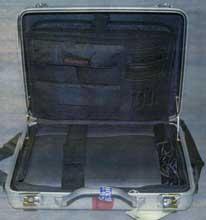
However, the FBI’s National Security Law Unit never even submitted an application for a FISA intelligence warrant to search the contents of the laptop. The 9/11 Commission Report characterized this failure to submit the application as a consequence of a “spirited debate been the Minneapolis Field Office, FBI headquarters, and the CIA.” Following said “spirited debate,” FBI headquarters determined that Moussaoui’s connection to al-Khattab, as indicated in the French intelligence report, was not sufficient grounds for a FISA warrant because al-Khattab was not sufficiently connected to a known terrorist organization. This was despite the fact that the FBI was certainly aware of al-Khattab’s connection to Al-Qaeda, as indicated by an April 2001 memo entitled “Bin Laden/Ibn Khattab Threat Reporting.”[64]
However, subsequent events indicate that this “spirited debate” was a pretext and distraction which allowed staff at FBI HQ to block Minneapolis field agents from applying for a search warrant. This is borne out by the fact that the criminal search warrant for Moussaoui’s laptop, which was signed by a judge following the events of 9/11, did not even reference the French intelligence information.
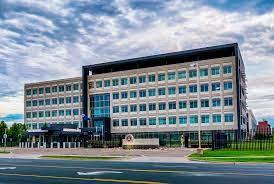
What FBI HQ staff wanted for probable cause, the purported lack of evidence that Moussaoui was a threat, was evidently provided in the form of the 9/11 attacks.[65]
As evidenced by their use of an INS overstay as a pretext for what was effectively a preventive arrest, the FBI agents on the ground appreciated the potential threat posed by Moussaoui, and believed they had sufficient probable cause. One of the agents in Minneapolis said that he “was trying to keep Moussaoui from crashing an airplane into the World Trade Center.”[66]
FBI HQ staff, on the other hand, purported to not appreciate this threat, with Michael Maltbie telling Minneapolis FBI agents, “you have a guy interested in this type of aircraft. That is it.”[67]
Rita Flack, another HQ staffer, approved of Maltbie’s efforts to block the warrant, despite the fact that she had read the so-called Phoenix Memo, in which the Phoenix FBI told FBI HQ that al-Qaeda was already using flight schools to obtain flight training for terrorist purposes.[68]
Having read this memo, she was certainly aware that Moussaoui posed a threat, and yet she continued to assist in blocking Minneapolis FBI agents from investigating Moussaoui. The coordinated efforts to block the investigation were so egregious to FBI agents in Minneapolis that, according to Rowley, “jokes were actually made that the key FBIHQ personnel had to be spies or moles … who were actually working for Osama Bin Laden to have so undercut Minneapolis’ effort.”[69]

Fenton has documented how Tom Wilshire—noted previously for his role in protecting al-Qaeda associates—was also highly involved in the Moussaoui case.[70] On August 24, Wilshire sent a cable to Dave Frasca, Michael Maltbie, and Rita Flack—the three FBI HQ staffers handling the case. He asked the agents if they had yet obtained biographical information about Moussaoui, if they had yet obtained photos, and if the CIA could get these photos to provide them to agency assets in the field.[71]
This indicates he was aware of the HQ staff’s ongoing efforts to get further information about Moussaoui, and that he played a role in facilitating the transfer of information from the FBI to the CIA in this case.
In his cable to FBI HQ staff, Wilshire referred to the Moussaoui case by asking Dave Frasca “where we are re the Minneapolis Airplane IV crowd.” It is unclear whether he was referring to Moussaoui himself or to the FBI field office in Minneapolis. [72] What is clear is that, while Minneapolis field agents “were trying to keep Moussaoui from crashing an airplane into the World Trade Center”[73] and a CIA agent detailed to FBI HQ was concerned that Moussaoui “will be talking to a control tower while aiming a 747 at the White House,” [74] Wilshire was downplaying the threat by making a joke about the 1980 parody disaster film “Airplane!”
Fenton explains that Tom Wilshire was “part of the group of staff at FBI headquarters who shackled the case … he was a senior member of this group, and … he was either the originator of the obstructionism or endorsed and strengthened it, undermining the FBI’s investigation.”[75]
Though we only have the one cable from Wilshire to FBI HQ staff, there are certainly others. Declassification and release of these other cables would shed light on the dynamic between Wilshire and other FBI HQ staff members.
As Kevin Fenton notes, if the Moussaoui investigation had not been stymied from above, the FBI and CIA would likely have identified at least 11 of the 19 hijackers. This is because, as discussed earlier, Moussaoui was financed by Binalshibh. Binalshibh was closely connected to three of the alleged hijackers—Mohamed Atta, Ziad Jarrah, and Marwan al-Shehhi.

When Moussaoui was arrested, he was in possession of a letter from Yazid Sufaat, host of the aforementioned January 2000 summit in Malaysia. Furthermore, the CIA had also observed Sufaat in the company of Khalid al-Mihdhar and Nawaf al-Hazmi.[76]
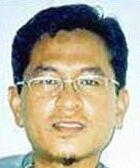
For his part, George Tenet was also aware of the Moussaoui case. He was briefed on August 23, with a document entitled “Islamic Extremist Learns to Fly.”[77]
Yet, he told no one about the case—including the President. Tenet was in contact with President Bush between August 31 and September 10,[78] and in an interview with Tim Russert claimed that he “held nothing back from the president” during that period.[79]
However, during this time of high threat reporting when Tenet knew an attack on U.S. soil was likely, he never relayed to President Bush, or anyone else, that he knew an “Islamic fundamentalist” had traveled to the U.S. to learn to fly 747s.[80] He alleges that, at the time, he had no idea the case was connected to al-Qaeda; he assumed the FBI was handling it, and therefore he didn’t discuss it with anyone.[81]
At the time of the attack, however, Tenet understood very well Moussaoui’s importance—so much so that the news of the 9/11 attacks triggered him to wonder if Moussaoui had anything to do with it.
On the morning of September 11, while enjoying breakfast at the St. Regis Hotel with former Oklahoma Senator David Boren, he received a call informing him of the attack on the World Trade Center. Boren later claimed that as Tenet left breakfast, he asked himself, “I wonder if this has something to do with the guy who trained for a pilot’s license?”[82] Thus, despite his claims to the contrary, it seems that Tenet did in fact hold something back from the President.
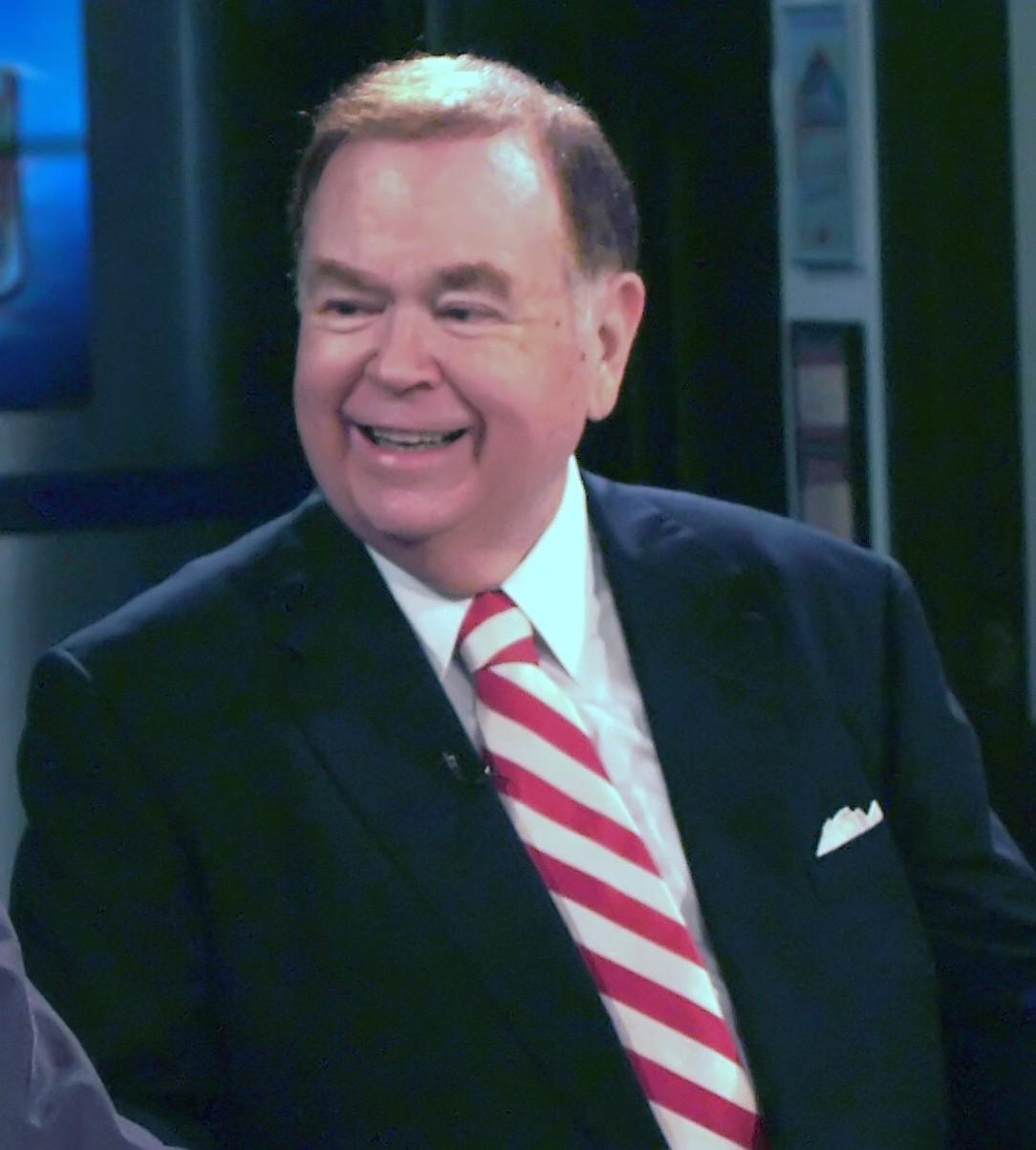
Tenet’s Golden Boy?
As discussed earlier in this article, Richard Blee seems to have been CIA Director George Tenet’s golden boy, or at least one of them. With Tenet’s assistance, he became head of Alec Station at age 41, five years younger than his legendary father had made station chief.[83]
Following Alec Station’s apparent disastrous failure to prevent the 9/11 attacks, Blee was assigned to Kabul as Chief of Station—arguably a promotion. Given that the agency was massively expanding its activities in the region following 9/11, this was certainly a plum position for a man with long-standing interest in Central Asia.[84]
When researchers began to uncover Blee’s identity and his role in the disastrous actions taken by Alec Station leadership in advance of the attacks, Tenet attempted to protect him. In 2011, John Duffy and Ray Nowosielski were working on a documentary podcast about the CIA’s actions with respect to al-Mihdhar and al-Hazmi. They had interviewed the former National Coordinator for Counterterror, Richard Clarke, who made statements that implicated Blee in a plot to conceal information from both the FBI and Clarke himself (some of which is detailed earlier in this article).

Duffy and Nowosielski sent a video of the interview to Tenet, who responded to them with a joint statement issued along with Cofer Black and Richard Blee. They attempted to exonerate themselves, stating “[w]e testified under oath about what we did, what we knew and what we didn’t know. We stand by that testimony.”[85]
Unfortunately for Tenet, that testimony included a number of statements that we now know to be false. One particularly intriguing false statement concerns that crucial March 5, 2000, Bangkok station cable which detailed that al-Hazmi and a companion (al-Mihdhar) had traveled to the U.S.[86]
Tenet testified to the congressional inquiry that “I know that nobody read that cable.” He repeated that “nobody read that cable in the March timeframe,” and when pressed by Senator Levin, he again stated that “nobody read that information only cable.”
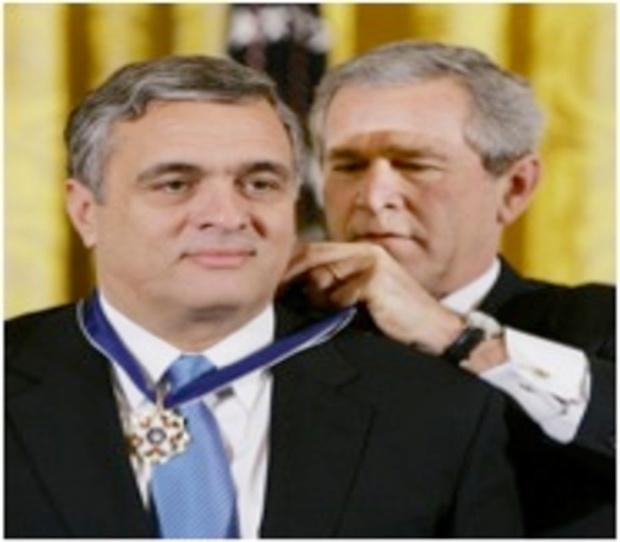
Yet, the CIA inspector general’s report indicates that “in the period January through March 2000, some 50 to 60 individuals read one or more of six Agency cables containing travel information related to these terrorists.” [87]
For Tenet to insist that “nobody read that cable,” when we know that Wilshire read it on May 15, 2001, suggests that he may have been part of Black’s and Blee’s CIA efforts to block FBI inquiry into certain al-Qaeda operations. More clearly, Tenet was part of a subsequent effort to conceal the whole fiasco from a congressional inquiry.
Why Was Wilshire So Concerned? The Case for GID Surveillance of the Alleged 9/11 Hijackers
When analyzing Tom Wilshire’s behavior, the cables he sent between July 5 and July 23 are rather curious. As noted, Wilshire had prevented FBI agent Doug Miller from passing to the FBI information about Khalid al-Mihdhar and Nawaf al-Hazmi’s travel to the U.S. in January 2000.
He then continued to sit on this information, not informing the FBI, even after he was reminded of it again on May 15, 2001, upon reading a March 5, 2000, cable from the Bangkok station detailing al-Mihdhar and al-Hazmi’s travel to the U.S. Why then, in July 2001, did Wilshire send three cables to Blee and others within the CIA’s Counterterrorism Center explicitly naming al-Mihdhar as a threat to American national security?

As detailed above, Blee was certain of an upcoming al-Qaeda attack on American soil. Tenet told the 9/11 Commission that during the summer of 2001, “the system was blinking red” in anticipation.[88] Kevin Fenton has argued that Wilshire, aware of this threat, may have been attempting to alert Blee to the fact that al-Mihdhar and al-Hazmi—the soon-to-be alleged hijackers they had been protecting—were likely to be involved in this upcoming attack.[89]
If this is the case, then the curious coincidence of Wilshire’s cable on July 5 and al-Mihdhar’s re-entry into the United States on July 4 takes on new significance. If Wilshire was aware that al-Mihdhar had re-entered the U.S. on July 4, it may have prompted him to attempt to warn Blee of impending danger.
Wilshire and Blee had been protecting al-Mihdhar for 18 months at this point, and if he was involved in an upcoming attack, any investigation into what the CIA knew would, as it ultimately did, discover this fact. Wilshire may have been acting to protect himself and Blee, or just himself.
While nothing in the CIA’s publicly available records indicates that the agency was surveilling al-Mihdhar, strong circumstantial evidence suggests that elements within the Saudi Arabian government may have relayed this information to elements within the CIA.
In 2007, Prince Bandar, Saudi ambassador to the U.S., commented that “Saudi security had been actively following the movements of most of the terrorists with precision” in advance of the 9/11 attacks.[90]

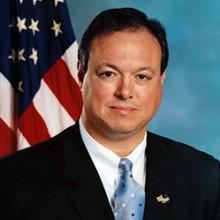
Of course, the 2016 release of the long-classified “28 pages” of the Joint Congressional Inquiry provided indications that Bandar knew more than he let on. These classified pages drew in part from an FBI investigation led by manager Pat D’Amuro’s team in the weeks after 9/11.
The FBI’s investigation chiefly focused on two men, Omar al-Bayoumi and Osama Basnan. Though accounts differ as to how Bayoumi met al-Hazmi and al-Mihdhar, what is clear is that he quickly became close with the pair. [91]
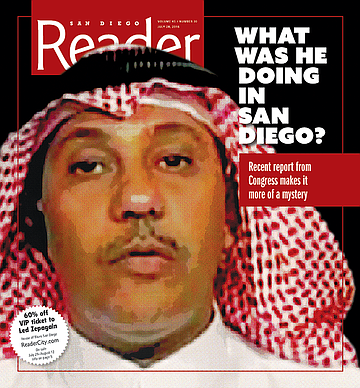
Omar al-Bayoumi [Source: sandiegoreader.com] 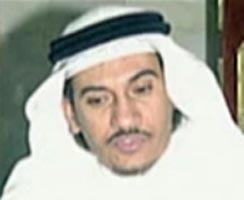
Osama Basnan [Source: historycommons.org]
He secured them a San Diego apartment next to his, served as a guarantor on their lease, and even provided them with more than $1500 for two months of rent. More significantly, he helped arrange classes at flight school for the pair.[92]

Bayoumi was employed at Dallah Avco,[93] a Saudi aviation services company ultimately owned by the now disgraced and presumably imprisoned[94] Saudi billionaire Saleh Abdullah Kamel.[95]

When Bayoumi began his employment, he was paid a small stipend of under $500 a month. When al-Hazmi and al-Mihdhar arrived in San Diego, his pay increased to $3,700 a month.[96] This, despite the fact that a source told the FBI that Bayoumi was a “ghost employee” of Dallah Avco who was “being paid for doing nothing.”[97]
Bayoumi was also receiving large sums of money, totaling in the tens of thousands of dollars, from none other than Haifa bint Faisal, Prince Bandar’s wife.[98] On one occasion, Bayoumi received a check from Prince Bandar’s account directly.[99]

Bayoumi left the U.S. in July 2001,[100] but not long after, his good friend Osama Basnan moved into his apartment building, which as noted also housed al-Hazmi and al-Mihdhar. The FBI felt this “could indicate [Basnan] succeeded Omar al Bayoumi and may be undertaking activities on behalf of the Government of Saudi Arabia.”[101]
Certainly Basnan seemed to sympathize with the alleged hijackers: After 9/11, Basnan reportedly “celebrated the heroes of September 11” and talked about “what a wonderful, glorious day it had been.”[102]
The FBI’s investigation revealed that Basnan had received more than $74,000 in cashier’s checks from Bandar’s wife between February 1999 and May 2002. On one occasion, Basnan received $15,000 directly from Prince Bandar.[103]
In April 2002, Basnan met with an unknown “high Saudi prince who has responsibilities for intelligence matters”[104] and who was part of a Saudi royal entourage which had arrived in Texas to conduct meetings with Bush, Cheney, and Rumsfeld. This prince provided Basnan with “a significant amount of cash.”[105] These connections strongly suggest that Basnan was an agent of Saudi intelligence.
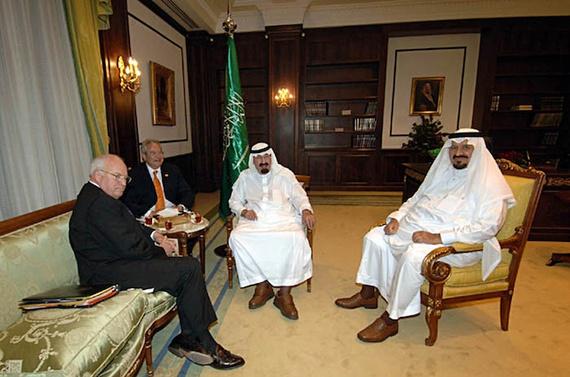
Collectively, these links between Saudi (GID) intelligence agents, Prince Bandar, and the alleged 9/11 hijackers are strongly suggestive of a GID role in the handling of the hijackers, and they lend credence to Bandar’s claim that the GID was closely following the hijackers’ movements.
Given all this, it is worth uncovering any details about the information that Bandar or other Saudi intelligence officials may have provided Tenet. As James Risen has reported, Bandar and Tenet were close, with Tenet visiting Bandar’s McLean, Virginia, estate monthly. Tenet and Bandar would frequently exchange information, but Tenet would not reveal this information to other officials at the CIA—the broader agency only discovered what had been discussed through Saudi sources, typically long after the fact. [106]
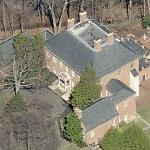
Tenet’s relationship with the Saudis was held so close to the vest that in the 1990s, Tenet appointed one of his top aides as station chief in Riyadh. This station chief would frequently communicate with Tenet directly, bypassing the chain of command and thereby “[driving] the barons of the [Near East Division] and [Counterterrorism Center] crazy because they were not in the loop.”
Indeed, according to Risen’s source, “top CIA managers were intent on making sure that the CIA did not produce politically inconvenient intelligence that could cause headaches at the White House.”[107] Tenet’s appointment of a top aide to a sensitive position in Riyadh mirrors Tenet’s appointment of Blee to a sensitive position at Alec Station.
This close relationship between Tenet and Saudi intelligence, which kept the Near East Division and Counterterrorism Center out of the loop, follows the long-standing and alarming post-Watergate pattern of bypassing the CIA bureaucracy to enable covert operations and avoid accountability in the face of “congressional interference.”
The Safari Club network, of which this Tenet/Saudi relationship seems a piece, was created specifically to link CIA leadership with the leaders of Saudi and other intelligence agencies for the purpose of avoiding accountability and keeping intelligence operations covert and unimpeded by congressional fetters.
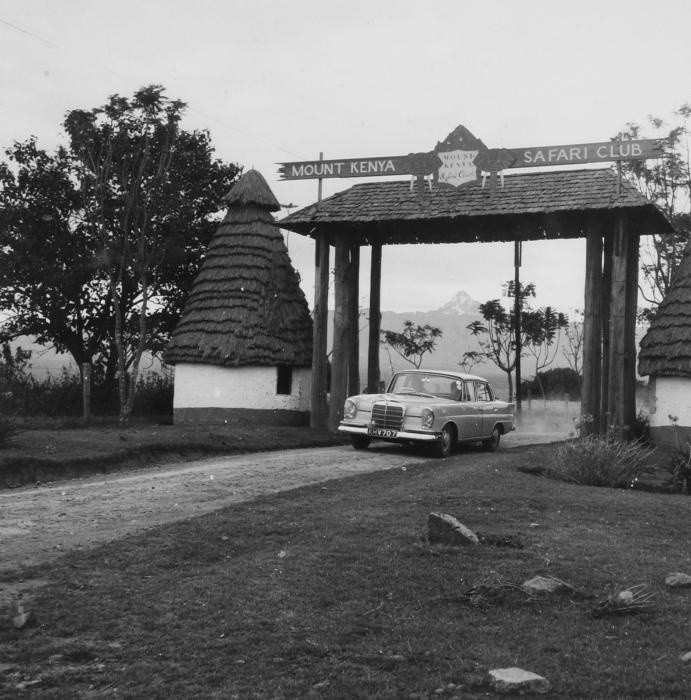
In this context, Tenet’s close relationship with Bandar and others in the Saudi intelligence community is concerning, as it indicates his desire for secrecy even from high CIA officials, not mention Congressional bodies tasked with providing intelligence oversight.
Another likely venue for GID-CIA collaboration was the 1997 Saudi-U.S. “joint intelligence committee” established by Saudi Defense Minister Prince Sultan bin Abdulaziz and presumably his counterparts in U.S. defense and intelligence. This committee was established “to share information on terrorism in general and on bin Laden (and al-Qaeda) in particular.”[108]
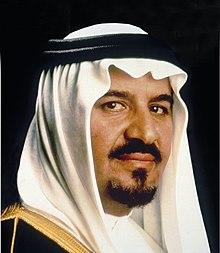
Peter Dale Scott has written that this committee was part of a liaison agreement between the CIA and GID. The nature of these liaison arrangements, as Scott explains, means that it “would probably have required special access clearances for those privy to the arrangement and sharing the liaison information.”
Such could help explain some serious anomalies.
First, there is the extensive protection provided to al-Hazmi and al-Mihdhar by Wilshire and others of the CIA’s Alec Station. Second, there is the evidence suggesting transmission of information between elements of the GID monitoring al-Hazmi and al-Mihdhar’s movements and Wilshire.
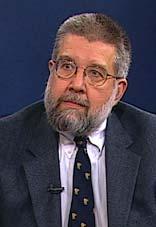
Third, there is the fact that certain other members of Alec Station, like Doug Miller, were deliberately kept out of the loop.[109]
A heretofore secret liaison arrangement which provided for al-Hazmi and al-Mihdhar’s safe passage into the United States would seem to be the most sensible explanation for all of this.
The pattern of facts presented here is circumstantial, but highly supportive of the conclusion that certain elements within the CIA, including Wilshire and Blee, were not only aware of al-Hazmi’s and al-Mihdhar’s movements, but were actively protecting operations of some kind under the terms of a joint CIA-GID liaison agreement.
Such an explanation takes into account a number of factors, namely: the GID’s role in handling al-Hazmi and al-Mihdhar, Prince Bandar’s personal role in financing their handlers Bayoumi and Basnan, Bandar’s close and secretive relationship with Tenet, and Tenet’s direct personal relationship with Blee. In this context, the timing of Wilshire’s July 5 cable expressing alarm at al-Mihdhar’s probable role in an upcoming terrorist attack and al-Mihdhar’s re-entry into the U.S. on July 4 should not be dismissed as mere coincidence.
Tenet’s Involvement in the Pre-Coverup
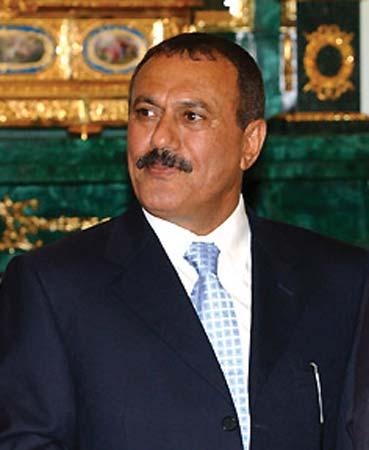
In recent months, Tenet has come under further scrutiny for his role in protecting key al Qaeda personnel. As detailed by Alex Rubinstein, leaked phone calls between Tenet and then-Yemeni President Ali Abdullah Saleh, published by the Houthi government of Yemen, indicate that Tenet was pressuring Saleh to release a prisoner who was being held by the Yemeni government in connection with the USS Cole bombing.[110]
At this time, the suspects of the Cole bombing were top priority for Alec Station. In fact, Tom Wilshire’s July 23, 2001, cable (discussed above) was a reply to a July 13 cable he had sent.
In this cable, Wilshire discussed Walid Mohammed bin Attash as a key player in the USS Cole bombing, and asked the CIA Counterterrorism Center leadership, Blee among them, if the FBI could be informed. To reiterate, permission for this was not forthcoming.[111]
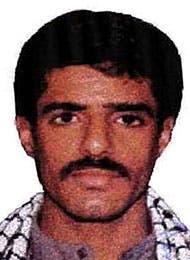
Khalid al-Mihdhar, who had been protected by Blee, Wilshire, and others in Alec Station on numerous occasions, was also a key suspect in the bombing. The Yemeni Prime Minister at the time, Abd al-Karim al-Iryani, declared that al-Mihdhar “was one of the Cole perpetrators, involved in preparations.”[112]
It seems that Tenet himself was committed to ensuring the FBI was not fully informed about al-Qaeda and the Cole bombings. When President Saleh informed Tenet that the FBI was on the ground in Yemen investigating the bombing, and asked if they could come to retrieve the prisoner in question, Tenet was insistent that “this is my person, this is my problem, this is my issue.”
Saleh and Tenet then discussed the details, whereby an officer from the CIA station in Yemen would come and retrieve the prisoner, instead of the FBI.[113]
Major General Abdul Qadir al-Shami, the deputy head of the Yemeni Security and Intelligence Service, told Houthi media that the identity of this prisoner was none other than Anwar al-Awlaki.
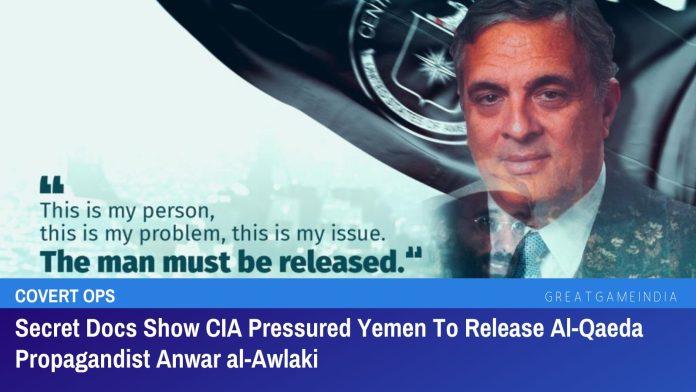
Al-Awlaki had already been under investigation by the FBI in 1999 and 2000 over his possible role as a procurement agent for Osama bin Laden.[114]
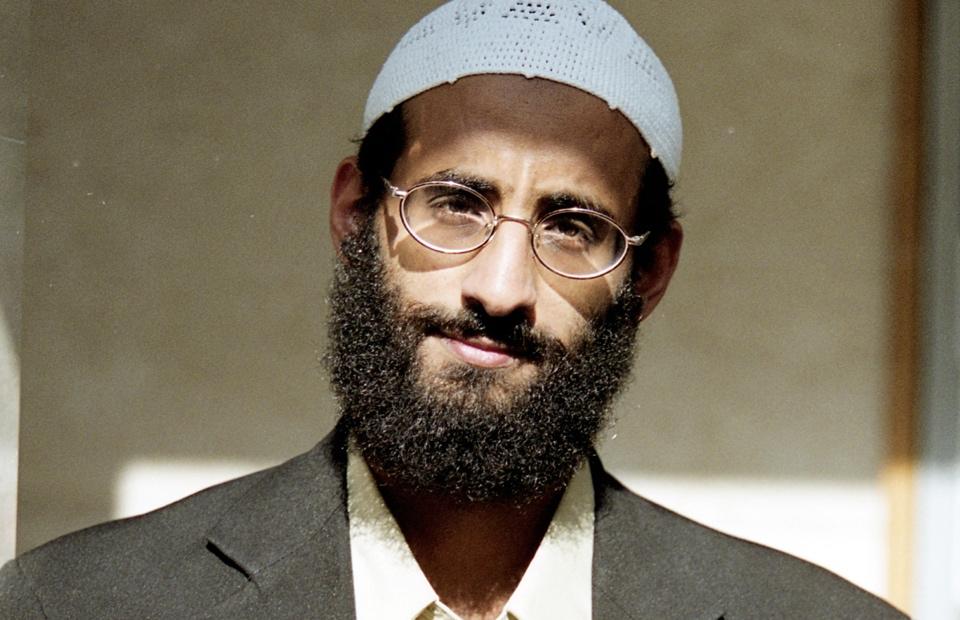
His possible role as a CIA asset of some kind is particularly intriguing in light of his relationships with the alleged hijackers al-Hazmi and al-Mihdhar—the men whose activities were being concealed by Blee and others at Alec Station.
As the 9/11 Commission Report notes, al-Awlaki admitted to meeting al-Hazmi when he was an imam at the Rabat mosque in San Diego.[115] In fact, many FBI agents suspected that al-Awlaki may in fact have secured al-Hazmi and al-Mihdhar housing when they moved to Alexandria, Virginia, a suspicion that the Commissioners shared.[116]
As documents obtained by Judicial Watch through a 2013 FOIA request revealed, by September 27, 2001, the FBI was aware that al-Awlaki had purchased plane tickets in July and August of 2001 for alleged hijackers Atta, Suqami, and al-Sheri.[117]
Al-Awlaki’s subsequent presence at a February 5, 2002, Pentagon dinner as an “up and coming” “moderate Muslim” seems incongruous with his assistance to the alleged 9/11 hijackers.[118] In fact, an FBI surveillance team followed al-Awlaki to the dinner, likely because just the day before they had identified him as a “terrorist organization member.”[119]
But while he may have been just a surveillance target for the FBI in February 2002, his repeated arrests and releases from U.S. custody, including in October 2002, November 2006, and July 2007, paint the picture of an FBI asset.[120]
An October 22, 2002, FBI memo, with the subject line “Anwar Nasser Aulaqi” and the heading “Synopsis: Asset Reporting,” seems to confirm this,[121] as does the fact that just 12 days before this memo was written, he was being held at JFK Airport under a warrant for passport fraud, but was released at the direction of an FBI agent.[122]
Al-Awlaki’s apparent status as an FBI asset following 9/11 is concerning given his relationship to Bayoumi, a handler of al-Hazmi and al-Mihdhar in San Diego.
A 2011 Atlantic article described al-Awlaki as one of Bayoumi’s frequent “discussion partners.” In February 2000, soon after al-Hazmi and al-Mihdhar arrived in San Diego, they used Bayoumi’s phone to call al-Awlaki on four occasions.[123]
Given that al-Awlaki served the same role in securing housing for al-Hazmi and al-Mihdhar in Alexandria as Bayoumi did in San Diego, and that he had a close relationship with GID asset Bayoumi, it seems likely he was a subject of the GID-CIA liaison agreement that pertained to al-Hazmi and al-Mihdhar, and was certainly under GID surveillance (via Bayoumi) at the very least.
In either case, elements of the CIA who were privy to the GID-CIA liaison agreement would have been aware of al-Awlaki and his actions, just as they were aware of al-Hazmi’s and al-Mihdhar’s movements.
Assuming Major General al-Shami was correct and that the prisoner Tenet freed was al-Awlaki, it is worth exploring the implications of this fact. As discussed earlier, Tenet’s relationship with Bandar and the GID-CIA liaison agreement means that he would likely have been aware of al-Awlaki’s relationship with al-Hazmi and al-Mihdhar in San Diego, just as Wilshire at Alec Station was.
If Tenet had not secured al-Awlaki’s release, and FBI agents had been able to interview him, they would have found themselves in front of a man who had already been investigated by the Bureau in 1999 and 2000.[124]
Investigation of al-Awlaki’s activities in San Diego might have uncovered his connection to his frequent discussion partner and GID asset Bayoumi, certainly an inviting target for the Bureau within their counterintelligence responsibilities if nothing else.
While the outcomes of any counterfactual FBI investigation are speculative, had al-Awlaki been in federal custody it certainly would have meant that he would not have been in Alexandria to secure housing for al-Hazmi and al-Mihdhar in advance of the 9/11 attacks.
That al-Awlaki, a U.S. citizen, was killed by a drone strike on September 30, 2011, less than six months after Rep. Peter King (R-NY) opened a new investigation into his connections to the alleged hijackers, has potentially grave implications.[125]

The FBI actively concealed al-Awlaki from the 9/11 Commission, “refus[ing] to set up interviews between the Commission and al-Aulaqi [sic].”
They continued to obstruct, even after an official at the FBI Academy received an October 23, 2003, email from al-Awlaki in which he said he was “around and available” for interview by the Commission, who were on the ground in Yemen searching for him at that time.
Ultimately, he was never interviewed by the Commission, and whatever he knew about Bayoumi, al-Hazmi, or al-Mihdhar was made finally inaccessible on his death.[126]
The CIA Cover-up: Misfeasance or Malfeasance?
By now it is clear that,when Alec Station Deputy Chief Tom Wilshire reported to the 9/11 Joint Intelligence Inquiry that “something apparently was dropped somewhere, and we don’t know where that was,” he was not being entirely truthful.[127]
In fact, he and his co-workers, including his superiors—Alec Station Chief Richard Blee and CIA Director Tenet—were engaged in the concealment of what appear to have been ongoing CIA-GID operations.
These CIA officials took a number of active steps to conceal these operations from the FBI and members of the Clinton and Bush administrations.
These operations involved some of those who would later be accused of having a role in 9/11 and were conducted in collaboration with elements of the Saudi GID. This protection of the alleged 9/11 hijackers may have had a benign explanation in its earlier phases, for example, as an attempt to surveil the “real terrorists” within al-Qaeda cells.
But following al-Mihdhar’s involvement in the USS Cole bombing, and particularly after Wilshire’s identification of al-Mihdhar as a serious threat and his subsequent failure to act on that threat in July 2001, this innocent explanation is arguably untenable.
Kevin Fenton, in his book Disconnecting the Dots, concluded that “by the summer of 2001, the purpose of withholding had become to allow the attacks to go forward.”[128]
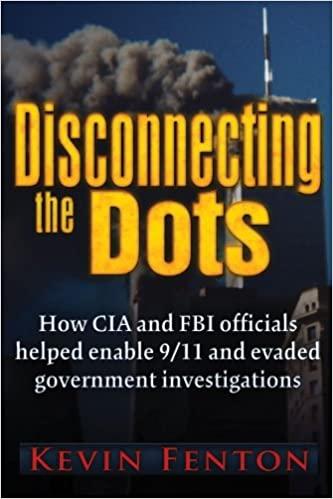
We do not have sufficient evidence to know the extent to which Blee, Wilshire, and perhaps Tenet may have been privy to the scope and scale of the attacks. That said, Blee’s comments that there would be “significant terrorist attacks against the United States in the coming weeks or months” and that these “attacks will be spectacular” provide some hints at what they expected.[129]
Dating back to 1999, Blee’s role in cultivating relationships with the Uzbekistan government and the anti-Taliban Northern Alliance also indicates that they could have expected the likely outcome of these spectacular attacks would be an invasion of Afghanistan.
Following the events of 9/11, Tenet engaged in a cover-up, which included making false statements under oath to protect Blee and Wilshire. At the same time, he rewarded Blee with a plum promotion to Kabul station chief, where Blee would carry out his role in the NSPD-9 plans for the Afghan invasion, plans which had been drawn up on September 4 and 10, 2001.
Finally, Tenet’s own actions to protect a prisoner being held in connection with the USS Cole bombing seemingly belie the “bumbling CIA” narrative put forth by Wilshire in his testimony. Given that this prisoner was apparently Anwar al-Awlaki, Tenet appears to have engaged in a type of protection analogous to the actions of Wilshire and Blee with respect to al-Hazmi and al-Mihdhar. After all, al-Awlaki had been in contact with those two alleged hijackers before the USS Cole bombing, and he purchased plane tickets or provided housing for five of the alleged hijackers after the bombing. Tenet’s actions demand explanation.
While the slow trickle of information into the mainstream press about Saudi involvement in 9/11 seems to advance a fallback “Saudis-did-it” cover story, the arguments developed in this piece indicate CIA complicity in whatever operations the Saudi security services were running.
CIA protection for alleged hijackers al-Hazmi and al-Mihdhar was crucial, as without this protection, the FBI would likely have arrested them and many of the other alleged hijackers. Indeed, without al-Hazmi and al-Mihdhar’s protection, al Qaeda’s apparent involvement in the 9/11 attacks may not have been so apparent.
That is to say that without this protection, the U.S. foreign policy establishment would have been deprived of the pretext they needed to convince the American public and politicians, as well as international alliances and institutions like NATO and the UN Security Council, of the need to launch the Global War on Terror. Ascribing sole responsibility for the 9/11 attacks to al Qaeda was the most important element of this pretext.
The evidence belatedly assembled herein renders that pretext essentially untenable at this point. It is our hope that new information about Saudi involvement in 9/11 does not distract from the demonstrable complicity of the CIA and other elements of the national security bureaucracy.

-
Peter Dale Scott, “The Falsified War on Terror: How the US Has Protected Some of Its Enemies,” The Asia-Pacific Journal: Japan Focus 11, no. 40 (October 1, 2013), https://apjjf.org/2013/11/40/Peter-Dale-Scott/4005/article.html. ↑
-
Scott, “The Falsified War on Terror.” ↑
-
Stephen Franklin, “Slain Muslim Had Link to Radical Cleric,” Chicago Tribune, July 11, 1993, https://www.chicagotribune.com/news/ct-xpm-1993-07-11-9307110208-story.html. ↑
-
Douglas Jehl, “C.I.A. Officers Played Role In Sheik Visas,” The New York Times, July 22, 1993, https://www.nytimes.com/1993/07/22/nyregion/cia-officers-played-role-in-sheik-visas.html. ↑
-
Scott, “The Falsified War on Terror.” ↑
-
“Ali Mohamed Case” (U.S. Department of Defense: Defense Human Resources Activity, n.d.), https://web.archive.org/web/20110227172332/http://www.dhra.mil/perserec/adr/counterterrorism/mohamed.htm. ↑
-
John Kifner, “Police Think Kahane Slaying Suspect Acted Alone,” The New York Times, November 8, 1990, https://www.nytimes.com/1990/11/08/nyregion/police-think-kahane-slaying-suspect-acted-alone.html. ↑
-
“Ali Mohamed Case.” ↑
-
Lawrence Wright, The Looming Tower: Al-Qaeda and the Road to 9/11 (New York: Vintage Books, 2011), 180. ↑
-
Wright, The Looming Tower, 181. ↑
-
Peter Lance, 1000 Years for Revenge: International Terrorism and the FBI (New York: Regan Books, 2003), 30, 31, 32. ↑
-
Wright, The Looming Tower, 181. ↑
-
Scott, “The Falsified War on Terror.” ↑
-
Selwyn Raab, “Jury Acquits Defendant in Kahane Trial,” The New York Times, December 22, 1991, https://www.nytimes.com/1991/12/22/nyregion/jury-acquits-defendant-in-kahane-trial.html?searchResultPosition=46. ↑
-
Ronald Sullivan, “Judge Gives Maximum Term in Kahane Case,” The New York Times, January 30, 1992, https://www.nytimes.com/1992/01/30/nyregion/judge-gives-maximum-term-in-kahane-case.html?searchResultPosition=56. ↑
-
Gil Stern and Stern Shefler, “‘Sharon Was Kahane Killer’s Target,’” Jerusalem Post, August 15, 2010, https://www.jpost.com/International/Sharon-was-Kahane-killers-target. ↑
-
Scott, “The Falsified War on Terror.” ↑
-
Estanislao Oziewicz and Tu Thanh Ha, “Canada freed top al-Qaeda operative,” The Globe and Mail, November 22, 2001, https://www.theglobeandmail.com/news/national/canada-freed-top-al-qaeda-operative/article1034823/. ↑
-
Scott, “The Falsified War on Terror.” ↑
-
“Ali Mohamed Case.” ↑
-
Ralph Blumenthal, “Tapes in Bombing Plot Show Informer and F.B.I. at Odds,” The New York Times, October 27, 1993, https://www.nytimes.com/1993/10/27/nyregion/tapes-in-bombing-plot-show-informer-and-fbi-at-odds.html. ↑
-
Ralph Blumenthal, “Tapes Depict Proposal to Thwart Bomb Used in Trade Center Blast,” The New York Times, October 28, 1993, https://www.nytimes.com/1993/10/28/nyregion/tapes-depict-proposal-to-thwart-bomb-used-in-trade-center-blast.html. ↑
-
Joseph Neffand and John Sullivan, “Al-Qaeda Terrorist Duped FBI, Army,” The News & Observer, October 21, 2001, reprinted at: https://web.archive.org/web/20030510044442/https://freerepublic.com/focus/news/554746/posts. ↑
-
Neffand and Sullivan, “Al-Qaeda Terrorist Duped FBI, Army.” ↑
-
Kevin Fenton, Disconnecting the Dots: How CIA and FBI officials helped enable 9/11 and evaded government investigations (Walterville, OR: Trine Day, 2011), 13, 14. ↑
-
Fenton, Disconnecting the Dots, 15. ↑
-
Fenton, Disconnecting the Dots, 13. ↑
-
John Duffy and Ray Nowosielski, The Watchdogs Didn’t Bark: The CIA, NSA, and the Crimes of the War on Terror (New York: Hot Books, 2018), 25, 26. ↑
-
“Joint Inquiry into Intelligence Community Activities Before and After the Terrorist Attacks of September 11, 2001” (U.S. Government Printing Office, September 2002), https://www.intelligence.senate.gov/hearings/joint-inquiry-intelligence-community-activities-and-after-terrorist-attacks-september-11-0#.
Cf. Fenton, Disconnecting the Dots, 61. ↑ -
Duffy and Nowosielski, The Watchdogs Didn’t Bark, 46. ↑
-
James Risen, “David H. Blee, 83, C.I.A. Spy Who Revised Defector Policy,” The New York Times, August 17, 2000, https://www.nytimes.com/2000/08/17/us/david-h-blee-83-cia-spy-who-revised-defector-policy.html. ↑
-
Duffy and Nowosielski, The Watchdogs Didn’t Bark, 47. ↑
-
Steve Coll, Ghost Wars: The Secret History of the CIA, Afghanistan, and Bin Laden, from the Soviet Invasion to September 10, 2001 [New York: Penguin Press, 2004), 451-452. Blee is known as “Rich” throughout this book. ↑
-
Duffy and Nowosielski, The Watchdogs Didn’t Bark, 47. ↑
-
Coll, Ghost Wars, 456. ↑
-
Duffy and Nowosielski, The Watchdogs Didn’t Bark, 46. ↑
-
Coll, Ghost Wars, 456. ↑
-
Coll, Ghost Wars, 459. ↑
-
Ned Zeman, et al., “The Path to 9/11: Lost Warnings and Fatal Errors,” Vanity Fair, December 19, 2004, https://www.vanityfair.com/news/2004/11/path-to-9-11-200411. ↑
-
Coll, Ghost Wars, 461, 471, 472. ↑
-
Coll, Ghost Wars, 539, 540. ↑
-
Peter Dale Scott and Aaron Good, “Was the Now-Forgotten Murder of One Man on September 9, 2001 a Crucial Pre-condition for 9/11?” CovertAction Magazine, December 9, 2020. ↑
-
Fenton, Disconnecting the Dots, 380. ↑
-
Fenton, Disconnecting the Dots, 371. ↑
-
Fenton, Disconnecting the Dots, 42. ↑
-
Fenton, Disconnecting the Dots, 43, 44, 45. ↑
-
Fenton, Disconnecting the Dots, 115, 116, 117. ↑
-
Kean and Hamilton, “The 9/11 Commission Report,” 267. Wilshire is referred to by the pseudonym “John” throughout the report. ↑
-
Fenton, Disconnecting the Dots, 284. ↑
-
Chris Whipple, “‘The Attacks Will Be Spectacular’: An exclusive look at how the Bush administration ignored this warning from the CIA months before 9/11, along with others that were far more detailed than previously revealed,” Politico, November 12, 2015, https://www.politico.com/magazine/story/2015/11/cia-directors-documentary-911-bush-213353/. ↑
-
Kean and Hamilton, “The 9/11 Commission Report,” 267. ↑
-
Fenton, Disconnecting the Dots, 270, 271, 272, 273. ↑
-
Whipple, “‘The Attacks Will Be Spectacular.’” ↑
-
Fenton, Disconnecting the Dots, 289, 290. ↑
-
Kean and Hamilton, “The 9/11 Commission Report,” 246. ↑
-
Kean and Hamilton, “The 9/11 Commission Report,” 247. ↑
-
Kean and Hamilton, “The 9/11 Commission Report,” 225. ↑
-
Kean and Hamilton, “The 9/11 Commission Report,” 273. ↑
-
Harry Samit, “Short Notice Legat Checks,” Email, August 15, 2001, https://en.wikisource.org/wiki/FBI_eMails_concerning_Moussaoui. ↑
-
The 9/11 Commission Report, Justice Department OIG report, and an FBI agent in the Minneapolis Field Office, Coleen Rowley—all indicate that this arrest was done to prevent Moussaoui from becoming a possible imminent threat: Kean and Hamilton, “The 9/11 Commission Report,” 273; “The FBI’s Investigation of Zacarias Moussaoui,” in A Review of the FBI’s Handling of Intelligence Information Related to the September 11 Attacks (Office of the Inspector General, 2004), https://oig.justice.gov/sites/default/files/archive/special/s0606/chapter4.htm.;
Coleen Rowley, “Coleen Rowley’s Memo to FBI Director Robert Mueller: An Edited Version of the Agent’s 13-Page Letter,” Time, May 21, 2002, https://web.archive.org/web/20020601145928/http:/www.time.com/time/nation/article/0,8599,249997,00.html.
Despite the imminent danger FBI agents on the ground saw, there has been speculation that Moussaoui was likely not involved in 9/11, and this is frequently mustered as a point in defense of the FBI’s inaction in this case. But despite alleged 9/11 mastermind Khalid Sheikh Mohammed’s insistence that Moussaoui was being trained for a “second wave” of attacks, which was to follow 9/11, “The 9/11 Commission Report” indicates that Moussaoui was likely being trained as a possible pilot for the 9/11 plot. There are a number of reasons for this, including the fact that Binalshibh was ordered by KSM to give Moussaoui money “within the framework” of the 9/11 plot, and that these funds were being provided so Moussaoui could pay for flight training at a time when KSM indicated he was not planning a second wave attack. This would strongly indicate that Moussaoui was intended to have a role in the 9/11 plot: Kean and Hamilton, “The 9/11 Commission Report,” 246-247. ↑
-
Kean and Hamilton, “The 9/11 Commission Report,” 246. ↑
-
Charles Frahm, “Re: Fwd: 199M-MP-60130(Zacarias Moussaoui),” Email, August 24, 2001, https://en.wikisource.org/wiki/FBI_eMails_concerning_Moussaoui. ↑
-
Rowley, “Coleen Rowley’s Memo to FBI Director Robert Mueller: An Edited Version of the Agent’s 13-Page Letter.” ↑
-
Kean and Hamilton, “The 9/11 Commission Report,” 274; Philip Shenon, “The Terrible Missed Chance,” Newsweek, September
4, 2001. ↑ -
Rowley, “Coleen Rowley’s Memo to FBI Director Robert Mueller: An Edited Version of the Agent’s 13-Page Letter.” ↑
-
“The FBI’s Investigation of Zacarias Moussaoui.” ↑
-
Fenton, Disconnecting the Dots, 295. ↑
-
Fenton, Disconnecting the Dots, 294. ↑
-
Rowley, “Coleen Rowley’s Memo to FBI Director Robert Mueller: An Edited Version of the Agent’s 13-Page Letter.” ↑
-
Fenton, Disconnecting the Dots, 296, 297. ↑
-
Fenton, Disconnecting the Dots, 297. ↑
-
Fenton, Disconnecting the Dots, 297, 298. ↑
-
“The FBI’s Investigation of Zacarias Moussaoui.” ↑
-
Fenton, Disconnecting the Dots, 296. ↑
-
Fenton, Disconnecting the Dots, 299. ↑
-
Fenton, Disconnecting the Dots, 291, 292. ↑
-
“Islamic Extremist Learns to Fly,” DCI Update: Terrorist Threat Review, August 23, 2001, https://coop.vaed.uscourts.gov/moussaoui/exhibits/defense/660.pdf. ↑
-
Kean and Hamilton, “The 9/11 Commission Report,” 262. ↑
-
“‘Meet the Press’ Transcript for May 6, 2007,” NBC News, May 6, 2007, https://www.nbcnews.com/id/wbna18416169. ↑
-
“Islamic Extremist Learns to Fly.” ↑
-
Kean and Hamilton, “The 9/11 Commission Report,” 275. ↑
-
Duffy and Nowosielski, The Watchdogs Didn’t Bark, 85. ↑
-
Duffy and Nowosielski, The Watchdogs Didn’t Bark, 47. ↑
-
Fenton, Disconnecting the Dots, 380. ↑
-
Duffy and Nowosielski, The Watchdogs Didn’t Bark, 8, 9. ↑
-
Fenton, Disconnecting the Dots, 120, 121. ↑
-
Fenton, Disconnecting the Dots, 121, 122. ↑
-
Kean and Hamilton, “The 9/11 Commission Report,” 277. ↑
-
Fenton, Disconnecting the Dots, 276, 277. ↑
-
Anthony Summers and Robbyn Swan, “The Kingdom and the Towers,” Vanity Fair, June 30, 2011, https://www.vanityfair.com/news/2011/08/9-11-2011-201108. ↑
-
Michael Isikoff, “The Saudi Money Trail,” Newsweek, December 1, 2001, https://www.newsweek.com/saudi-money-trail-140813.; Duffy and Nowosielski, The Watchdogs Didn’t Bark, 232, 233. ↑
-
Isikoff, “The Saudi Money Trail.” ↑
-
Duffy and Nowosielski, The Watchdogs Didn’t Bark, 111, 112. ↑
-
Stephen Kalin and Reem Shamseddine, “Purge of Saudi Princes, Businessmen Widens, Travel Curbs Imposed,” Reuters (Riyadh, Saudi Arabia, November 6, 2017), https://www.reuters.com/article/us-saudi-arrests/purge-of-saudi-princes-businessmen-widens-travel-curbs-imposed-idUSKBN1D60S6. ↑
-
“Dallah Al Baraka Group,” D&B Business Directory, n.d., https://www.dnb.com/business-directory/company-profiles.dallah_al_baraka_group.d76ac4dc611af48e43e14d9d3f01ca97.html. ↑
-
Duffy and Nowosielski, The Watchdogs Didn’t Bark, 111, 112. ↑
-
Judicial Watch, “FBI Documents Raise Additional Questions About Saudi and al-Aulaqi Connections to 9/11 Attacks,” February 12, 2014, reprinted at: https://www.globenewswire.com/en/news-release/2014/02/12/1046472/0/en/Judicial-Watch-FBI-Documents-Raise-Additional-Questions-About-Saudi-and-al-Aulaqi-Connections-to-9-11-Attacks.html. ↑
-
Isikoff, “The Saudi Money Trail.” ↑
-
Duffy and Nowosielski, The Watchdogs Didn’t Bark, 154. ↑
-
Isikoff, “The Saudi Money Trail.” ↑
-
Duffy and Nowosielski, The Watchdogs Didn’t Bark, 112. ↑
-
Isikoff, “The Saudi Money Trail.” ↑
-
Duffy and Nowosielski, The Watchdogs Didn’t Bark, 154. ↑
-
Isikoff, “The Saudi Money Trail.” ↑
-
Duffy and Nowosielski, The Watchdogs Didn’t Bark, 150. ↑
-
James Risen, State of War: The Secret History of the CIA and the Bush Administration (New York: Free Press, 2006), 186-187. ↑
-
James Risen, State of War, 186-187. ↑
-
Prince Turki al-Faisal, “Allied Against Terrorism,” The Washington Post, September 17, 2001, https://www.washingtonpost.com/archive/opinions/2002/09/17/allied-against-terrorism/8215fbcb-5a6a-4696-8e88-a539fdb38a9d/. ↑
-
Peter Dale Scott, “Launching the U.S. Terror War: the CIA, 9/11, Afghanistan, and Central Asia,” The Asia-Pacific Journal: Japan Focus 12, no. 3 (March 12, 2012), https://apjjf.org/2013/11/40/Peter-Dale-Scott/4005/article.html. ↑
-
Alex Rubinstein, “Did the CIA pressure Yemen to release al-Qaeda propagandist Anwar al-Awlaki?” Substack, March 22, 2021, https://realalexrubi.substack.com/p/leaked-cia-pressured-yemen-to-release. ↑
-
Fenton, Disconnecting the Dots, 270, 271, 272, 273. ↑
-
Brian Whitaker, “Piecing Together the Terrorist Jigsaw,” The Guardian, October 15, 2001, https://www.theguardian.com/world/2001/oct/15/worlddispatch.brianwhitaker. Cf. Fenton, 186, 187 ↑
-
Rubinstein, “Did the CIA pressure Yemen to release al-Qaeda propagandist Anwar al-Awlaki?” ↑
-
Rubinstein, “Did the CIA pressure Yemen to release al-Qaeda propagandist Anwar al-Awlaki?” ↑
-
Kean and Hamilton, “The 9/11 Commission Report,” 221. ↑
-
Kean and Hamilton, “The 9/11 Commission Report,” 230. ↑
-
Judicial Watch, “Docs Indicate FBI Knew Terrorist Anwar al-Aulaqi Purchased Airline Tickets for 9/11 Hijackers,” January 3, 2013, http://web.archive.org/web/20200220130514/https://www.judicialwatch.org/press-releases/uncovered-docs-indicate-fbi-knew-u-s-born-terrorist-anwar-al-aulaqi-purchased-airline-tickets-for-911-hijackers-when-he-dined-at-the-pentagon/. ↑
-
Catherine Herridge, “Al Qaeda Leader Dined at the Pentagon Just Months After 9/11,” Fox News, October 10, 2010, https://www.foxnews.com/us/exclusive-al-qaeda-leader-dined-at-the-pentagon-just-months-after-9-11. ↑
-
Judicial Watch, “New Docs Reveal FBI Surveillance Team Trailed Terrorist al-Aulaqi to Pentagon for His Luncheon Speech to DOD Brass,” September 11, 2013, https://web.archive.org/web/20200211124620/https://www.judicialwatch.org/press-releases/documents-obtained-by-judicial-watch-reveal-fbi-surveillance-team-trailed-terrorist-al-aulaqi-to-pentagon-entrance-for-his-luncheon-speech-to-dod-brass/. ↑
-
Judicial Watch, “Docs Indicate FBI Knew Terrorist Anwar al-Aulaqi Purchased Airline Tickets for 9/11 Hijackers.” ↑
-
Judicial Watch, “New Docs Reveal FBI Surveillance Team Trailed Terrorist al-Aulaqi to Pentagon for His Luncheon Speech to DOD Brass.” ↑
-
Judicial Watch, “Docs Indicate FBI Knew Terrorist Anwar al-Aulaqi Purchased Airline Tickets for 9/11 Hijackers.” ↑
-
J.M. Berger, “Anwar Al-Awlaki’s Links to the September 11 Hijackers,” The Atlantic, September 9, 2011, https://www.theatlantic.com/international/archive/2011/09/anwar-al-awlakis-links-to-the-september-11-hijackers/244796/. ↑
-
Kean and Hamilton, “The 9/11 Commission Report,” 221 (Endnote 33). ↑
-
Jordy Yager, “Rep. Peter King investigating links between Anwar al-Awlaki, 9/11 hijackers,” The Hill, August 16, 2011, https://thehill.com/homenews/house/177043-rep-peter-king-investigating-links-between-anwar-al-awlaki-911-hijackers. ↑
-
Judicial Watch, “New Documents Show FBI Kept Channels Open to Al-Aulaqi Despite Terrorist Designation,” September 30, 2014, reprinted at: https://uk.finance.yahoo.com/news/judicial-watch-documents-show-fbi-213009756.html. ↑
-
“Joint Inquiry into Intelligence Community Activities Before and After the Terrorist Attacks of September 11, 2001.” Cf. Fenton, Disconnecting the Dots, 61. ↑
-
Fenton, Disconnecting the Dots, 372. ↑
-
Whipple, “‘The Attacks Will Be Spectacular.’” ↑
CovertAction Magazine is made possible by subscriptions, orders and donations from readers like you.
Blow the Whistle on U.S. Imperialism
Click the whistle and donate
When you donate to CovertAction Magazine, you are supporting investigative journalism. Your contributions go directly to supporting the development, production, editing, and dissemination of the Magazine.
CovertAction Magazine does not receive corporate or government sponsorship. Yet, we hold a steadfast commitment to providing compensation for writers, editorial and technical support. Your support helps facilitate this compensation as well as increase the caliber of this work.
Please make a donation by clicking on the donate logo above and enter the amount and your credit or debit card information.
CovertAction Institute, Inc. (CAI) is a 501(c)(3) non-profit organization and your gift is tax-deductible for federal income purposes. CAI’s tax-exempt ID number is 87-2461683.
We sincerely thank you for your support.
Disclaimer: The contents of this article are the sole responsibility of the author(s). CovertAction Institute, Inc. (CAI), including its Board of Directors (BD), Editorial Board (EB), Advisory Board (AB), staff, volunteers and its projects (including CovertAction Magazine) are not responsible for any inaccurate or incorrect statement in this article. This article also does not necessarily represent the views the BD, the EB, the AB, staff, volunteers, or any members of its projects.
Differing viewpoints: CAM publishes articles with differing viewpoints in an effort to nurture vibrant debate and thoughtful critical analysis. Feel free to comment on the articles in the comment section and/or send your letters to the Editors, which we will publish in the Letters column.
Copyrighted Material: This web site may contain copyrighted material the use of which has not always been specifically authorized by the copyright owner. As a not-for-profit charitable organization incorporated in the State of New York, we are making such material available in an effort to advance the understanding of humanity’s problems and hopefully to help find solutions for those problems. We believe this constitutes a ‘fair use’ of any such copyrighted material as provided for in section 107 of the US Copyright Law. You can read more about ‘fair use’ and US Copyright Law at the Legal Information Institute of Cornell Law School.
Republishing: CovertAction Magazine (CAM) grants permission to cross-post CAM articles on not-for-profit community internet sites as long as the source is acknowledged together with a hyperlink to the original CovertAction Magazine article. Also, kindly let us know at info@CovertActionMagazine.com. For publication of CAM articles in print or other forms including commercial internet sites, contact: info@CovertActionMagazine.com.
By using this site, you agree to these terms above.
About the Author

Aaron Good is Editor at Large for CovertAction Magazine.
His revised doctoral dissertation, American Exception: Empire and the Deep State, is to be published by Skyhorse in the spring of 2022.
You can follow Aaron on Twitter: @Aaron_Good_
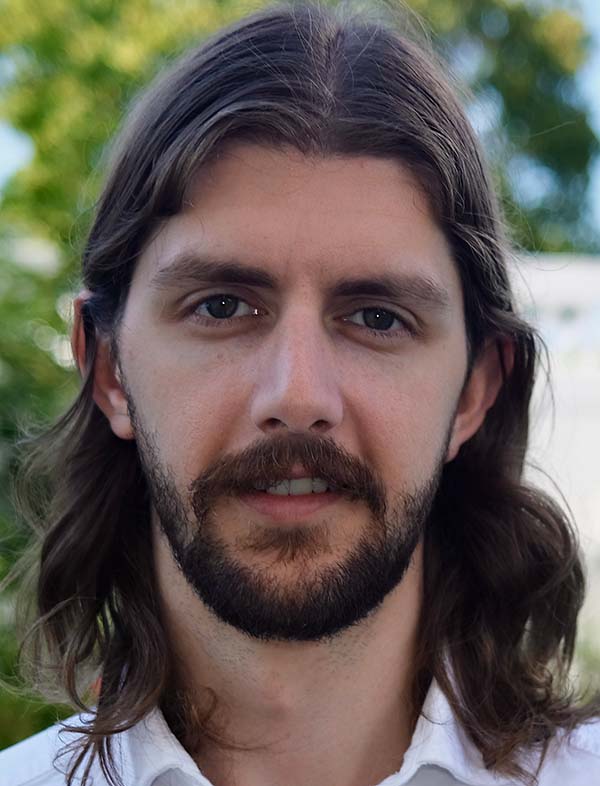
Ben Howard is an independent researcher.
He lives in Massachusetts with his wife and daughter.
You can follow Ben on Twitter: @housetrotter.
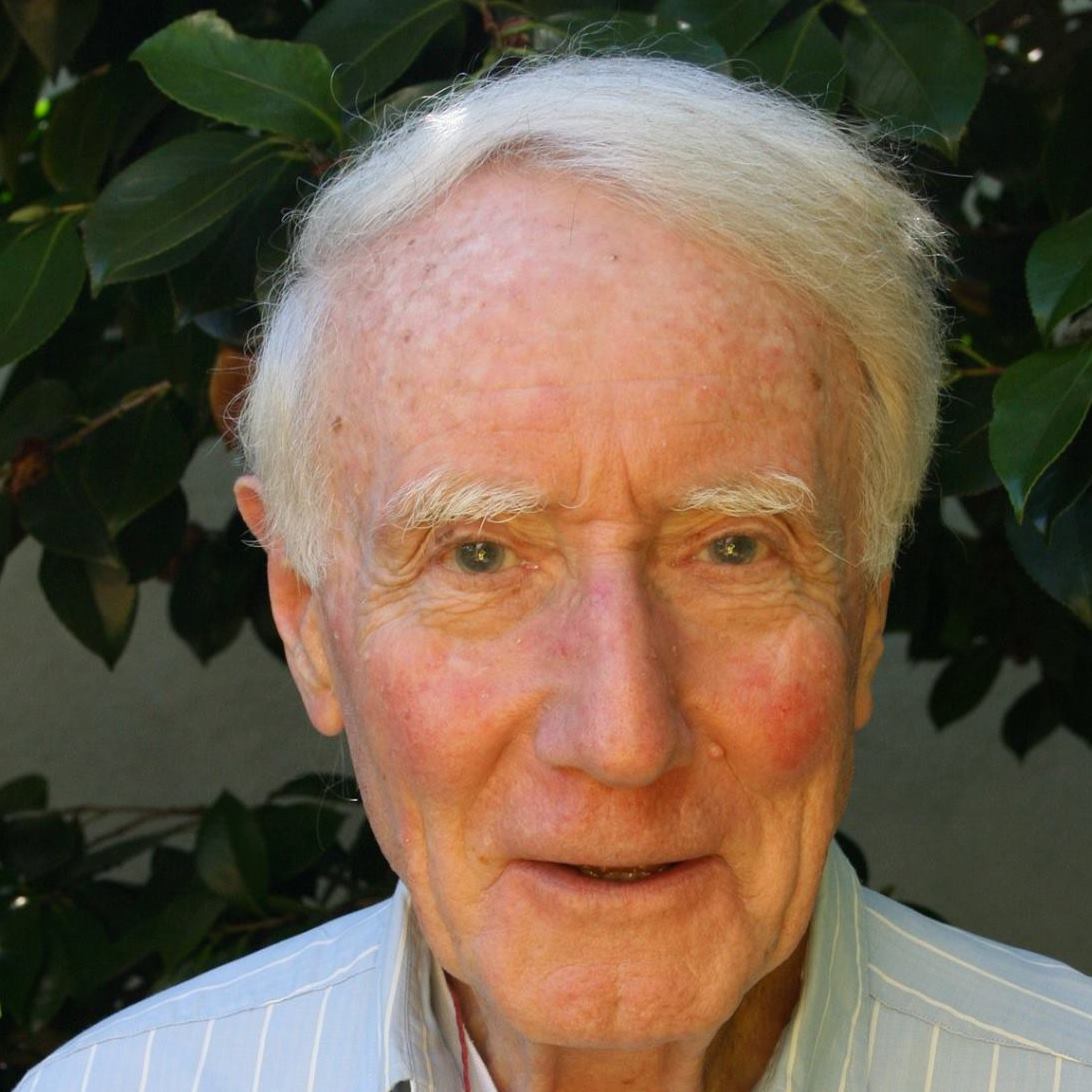
Peter Dale Scott is a former Canadian diplomat and poet.
Peter has written many important books on the CIA and the so-called “deep state,” including Deep Politics and the Death of JFK (University of California, 1993); The War Conspiracy, rev ed. (Skyhorse, 2008); The Road to 9/11 (University of California, 2007), American War Machine (Rowman & Littlefield, 2010) and The American Deep State (Rowman & Littlefield, 2017).
You can follow Peter’s work at: peterdalescott.net.

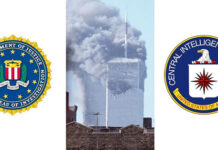


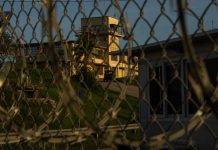

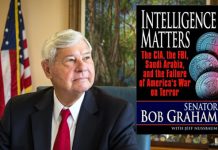
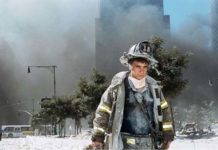
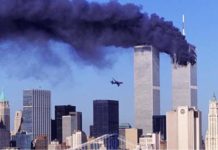
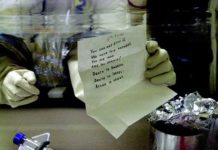

Where is the 3rd part?
Part 3: https://covertactionmagazine.com/2021/09/27/stepping-out-of-the-shadow-of-9-11-start-by-ending-the-post-9-11-states-of-emergency/
[…] Action Magazine: The Twenty Year Shadow of 9/11 (Part 2): Why Did Key U.S. Officials Protect the Alleged 9/11 Plotter…, Aaron Good, Ben Howard and Peter Dale Scott […]
[…] explain the US’ historical relationship with Al Qaeda, the fact that the hijackers were identified by multiple intelligence agencies beforehand, or the whistleblowers whose Al Qaeda investigations were blocked by higher ups in the lead up to […]
Of 284 American Airlines planes which flew scheduled flights on 9/11 all had identification numbers ending in “1” (e.g., N5BPA1) except for two, and all had flown the previous day, Sept. 10th, except for two. The two exceptions in both cases were the two American Airlines planes which were hijacked. In fact, Sept. 11th was the first time each of the four hijacked planes had flown in nine months or more. Did the 911 Commission investigate these anomalies? (see https://kiaskblog.wordpress.com/2021/09/09/9-11-planned-demolition-of-the-truth/)
[…] The Twenty Year Shadow of 9/11 (Part 2): Why Did Key U.S. Officials Protect the Alleged 9/11 Plotter… […]
[…] Aaron Good, Ben Howard y Peter Dale Scott, por Cover Action Magazine, Estados […]